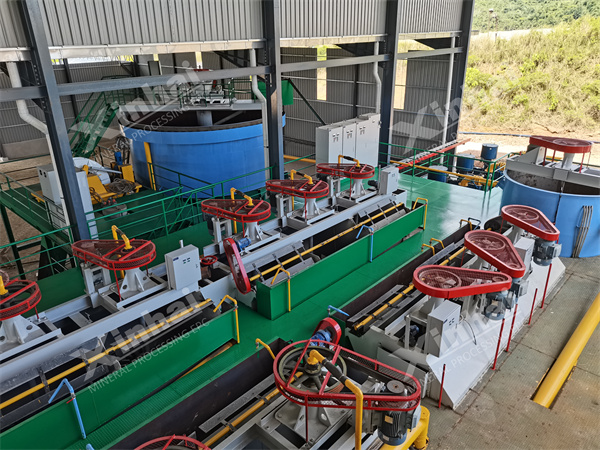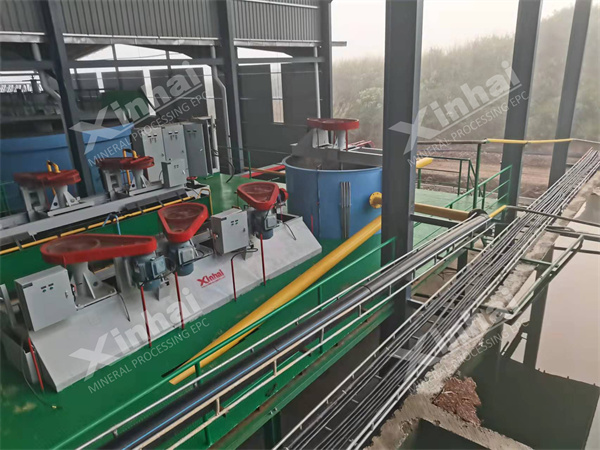As easily extractable sulfide copper ore resources become increasingly scarce, copper oxide ores and oxide-sulfide mixed ores have become important copper resources for extraction. Common methods for flotation of copper oxide ores include direct flotation and sulfide flotation. In the case described in this article, a combination of sulfide flotation and sulfuric acid leaching process was employed to treat copper oxide ores, achieving favorable process indicators.

Experimental ore samples were obtained from an oxide copper mine in Niger. Samples were collected from multiple points in the field, processed using a jaw crusher and a roll crusher to obtain ore particles with a size of -2 mm, which were mixed uniformly as subsequent experimental samples.
The main elements in the original ore are O, Si, Al, Cu, Ca, and S, accounting for 33.73%, 24.30%, 6.42%, 7.29%, 2.32%, and 0.28% respectively. It contains 0.28% S. The copper content in the ore is relatively high. Copper phase analysis of the original ore showed a copper content of 6.04%, with free copper oxide ore accounting for 3.93% of the total content, representing 65.07%. Combined with oxide copper accounting for 31.95% of the total content, only 0.02% of primary sulfide copper was present, accounting for 0.33% of the total copper, and secondary sulfide copper accounted for 2.65%. This ore belongs to high oxidation rate and high combination rate copper oxide ore.
According to mineralogical studies, the ore belongs to high oxidation rate and high combination rate copper oxide ore, with free copper oxide accounting for 65.07% and combined oxide copper accounting for 31.95%, mainly composed of malachite, azurite, and chrysocolla. Direct flotation is difficult to achieve ideal results, so the "sulfide flotation - sulfuric acid leaching" process is adopted, with priority given to floating sulfide copper and free copper oxide, and leaching method is used to recover the flotation tailings.

(1) Sulfide Flotation of Copper Oxide Ore
500g of ore sample was taken, ground to a fineness of -0.074 mm by 60%, and rough flotation was conducted under the conditions of sodium sulfide activator 2000 g/t, butyl xanthate and amyl xanthate collectors at 50 g/t and 100 g/t respectively, and pine oil foaming agent at 40 g/t. Secondary flotation was conducted under the conditions of sodium sulfide 1000 g/t, butyl xanthate and amyl xanthate collectors at 25 g/t and 50 g/t respectively, and pine oil foaming agent at 40 g/t. The experimental results are shown in Table 4. After "roughing and scavenging" sulfide flotation, a copper concentrate with a grade of 28.23% and a recovery rate of 56.18% was obtained, and the remaining copper minerals in the tailings were recovered using the leaching method.
(2) Leaching of Flotation Tailings
The flotation tailings were directly leached using 4% dilute sulfuric acid as the leaching agent, with a solid-liquid ratio of 1:3, leaching for 2 hours, and the leaching rate of copper was 91.15%.
For high oxidation rate and high combination rate copper oxide ores, direct flotation methods can result in significant copper loss in the tailings. Therefore, in this case, a combination of sulfide flotation and tailings leaching process was adopted, achieving good recovery results with a total copper recovery rate of 96.25%, providing a reference for the efficient recovery of such copper ores.